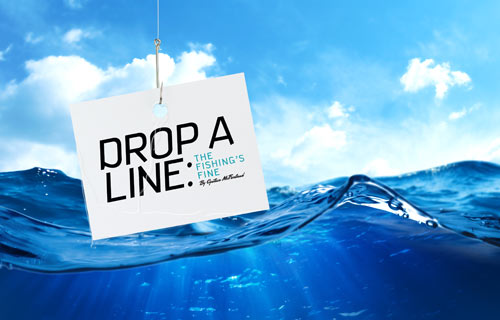
Widely known as the “Fishing Capital of the World,” Florida ranks No. 1 in the country with some 2.8 million anglers. Fishing has a $7.5 billion impact on the state and includes 100,000 angler-supported jobs and $4.3 billion in tax revenues and income.
“The best thing about this area is that you can fish here year-round; there are very few places in the country you can do that. You also have the option of freshwater or salt and not many places can say that,” says Joe Norris.
“There’s always something biting somewhere,” notes Norris, 63, of Sparr, who has lived in Florida over 30 years and does rod repair, builds custom rods and ties saltwater flies. “There’s a broad assortment of fishing opportunities in this area. You can go for fun, catch and release, or bring something back. You can even compete in bass, crappie and saltwater tournaments.
There’s something for anybody, based on what they want to do,” says Jeff Miller, president of Millers Boating Center in Ocala, a family-owned business that opened as a tackle shop in 1978.You don’t even need a boat to catch fish.
“You can fish Rodman Reservoir at the spillway or fish the north side of the Moss Bluff locks when the water is flowing,” adds Miller. “There are several areas where you can fish off the bank at local lakes. You can fish the pier at Crystal River off Fort Island Trail or head to some of the ponds in the Ocala National Forest.”
Of course, with a boat, your options expand exponentially.
Whether you’re going for bass or crappie, redfish or seatrout, there are numerous places within a short drive of Ocala to hit the water, and the sport extends to more than hook-and-line fishing. In this space, we can only skim the surface (pun intended) on the broad subject of fishing, but it might be enough to make you want to explore a lifestyle beloved by many Florida residents.

Essential Equipment
Sure, you can venture into Wal-Mart or a chain sporting goods store to buy fishing equipment, but if you’re looking for a great selection, plus personal service from a knowledgeable angler, visit a locally owned tackle shop like Elite Bait & Tackle.
You’ll be met by owner Terry Roberts and his friendly border collie, Emmy, who accompanies him to the shop every day and makes it her duty to greet each customer.
“I’m a one-man show,” laughs Roberts. “My dog and I are the only ones who work here.”
Local fishermen appreciate the fact that Roberts is an Ocala native who has been fishing since he was 10 years old. He opened Elite Bait & Tackle (elitebaitandtackle.com), which is located in the Winn-Dixie plaza at 36th Avenue and Maricamp Road, in July 2011.
Roberts has stocked his store with plenty of freshwater and inshore saltwater supplies. Except for the boat, you’ll find all you need to hit the water: rods and reels, line, maps, fishing lights, anchors. You name it and Roberts either has it or can get it.
In addition to lots of artificial lures, he has a variety of live bait, including minnows, shiners, crickets and worms. Anglers going for offshore saltwater species like to use squid, sardines and herring, and Roberts has all of those frozen and ready, too.
Of course, Roberts himself loves to fish, although owning a shop keeps him off the water more than he’d like. But the best part is that his experience allows him to help customers get exactly what they need.
“You can buy a rod for $30 or spend all the way up to $500; it just depends on the brand and quality you want,” explains Roberts. “These days a lot of people shop on the Internet, but there are still people who want to come in and handle the rod and reel before they buy.”
The casual, recreational angler may buy a combo rod and reel, but no serious fisherman is going to do this. They’ll match their rod to the reel, depending on conditions, and will have several different rods and reels, so they’re prepared for most any situation on the water.
Don’t skimp on your line. You can have the priciest rod and reel around but lose the fish because of cheap line that breaks. Many anglers recommend braided line, which is much more durable than monofilament.
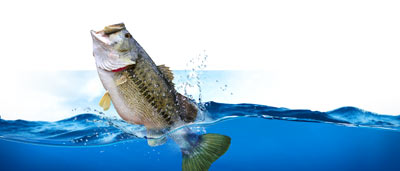
Here Fishy, Fishy…
When I was a kid, I thought fishermen tied the worm in a knot on the hook. Imagine my chagrin when I went fishing for the first time as an adult and realized the whole worm-meets-hook scenario is a bit more traumatic (for the worm, that is) than just tying a bow.
Although worms are the go-to bait in the stories we read as children, they’re just the tip of the iceberg when it comes to choices.
Bait can be live (think nightcrawlers, shiners, minnows, crickets or shrimp), a piece of something that was once alive (think chicken livers or crab) or a cut bait, which is typically a piece of another fish, such as mullet or ladyfish.
“Bass feed at the top in the morning, late at night and on overcast days, so you’d use top water bait under these conditions,” says A.J. Nuckles, a longtime Ocala horseman and farrier who’s been fishing since childhood. “A plastic worm, or swimbait, is the old standby; you can use them most any time. If you were going bass fishing and could only have one bait in your tackle box, it would be a plastic worm.”
Lures are to anglers what shoes are to the shopping-addicted female. It’s impossible to have too many. Lures come in many styles and materials, ranging from rubber, plastic and metal to wood, cork, animal hair, tinsel, feathers and more. Because fish can be downright picky, the avid angler tends to have a wide array of lures, also known as “artificials,” when fishing for bass.
Here’s a brief run-down on some basic lures:
Jigs
A weighted hook with a lead head. May be covered with live bait, such as a minnow or crawfish, or a plastic worm.
Flies
Used in fly fishing with a fly rod and reel (which is another article altogether!)
Plugs
Are shaped like a small fish and can be made to have a swimming action. Sometimes referred to as “crankbait” or “minnows.”
Spinners
Feature bent wire with a hook on the lower end topped by a spinning mechanism on top.
Spoon
Like their name, these resemble a table spoon and attract fish because of their wobbling, light-dancing appearance.
Surface lures
Also known as “top water bait,” they’re designed to mimic prey that fish hunt at the surface. Come in different shapes and sizes and may make sounds.
Poppers
Surface lures that can make a popping noise when used with the right technique.
Swimbait
Soft plastic bait made to resemble worms, fish, crabs, squid, lizards, frogs, leeches and other critters fish find appetizing. Can be made with a moving tail to resemble live baitfish, such as minnows.
Go With A Pro
You don’t have to own a boat or know where to drop a line to have a great day fishing. All you need is a good guide.
“It takes a lifetime to learn where to go and when to go. GPS and maps are good, but you need to know when to be there and at what stage of the tide,” says Herbert Wilkerson, 72, who has been guiding for 55 years and is based at Gulf Hammock on the Waccasassa River.
Wilkerson, who is also site manager for the Waccasassa Fishing Club, takes clients out on the Waccasassa River and into the Gulf to fish the shoreline and along the flats. They’re typically going for redfish and seatrout, which locals often refer to as speckled trout. For those species, he generally uses live shrimp or cut mullet and, sometimes, plastic bait.
“We use airboats and flats boats, but mostly airboats because the water is so shallow. An airboat allows you to get back into the creeks where the fish settle in the holes when they’re hunting warmer water in the winter,” notes Wilkerson, adding that the Gulf waters aren’t as deep as you might think in some areas. “It’s shallow along this coast. It only drops about one foot for every mile, so you can go out 4 miles from shore and it may only be 4 feet deep.”
Shallow water gets warm—especially when it’s muddied up by boats with high horsepower motors, which often happens on the flats.
Although Wilkerson takes clients out year-round, August and September are generally the slowest months for fishing, simply because of the hot weather.
“When the water temperature hits 80 to 85 degrees, the fish don’t like it, so they head for deeper, cooler water, making it more challenging to catch them,” he explains. “At the end of September when the nights start cooling off, the water temperature drops. When the water is 65 to 75 degrees, that’s ideal for the fish.”
Professional guides can’t guarantee what you’ll catch or how much, but they sure can put the odds in your favor. They typically furnish the rods, reels and bait, and, of course, the boat. Guides also do the dirty work, like baiting the hook and cleaning the fish, unless you prefer to do it yourself. Expect to spend about $350 for one to two anglers for an all-day outing, which typically starts around 7:30am and lasts until 3 or 3:30pm.
Websites like floridafishing.com and floridagofishing.com are a great resource to find guides and charters, as well as to learn more about fishing in general.
Size Really Does Matter
State law requires that all anglers, from commercial to the occasional recreational fisherman, comply with fishing regulations. This means you have to be licensed, which you can do online. Visit myfwc.com for details.
You‘re also responsible for knowing the limits and size requirements of the species you’re catching. If a game and fish officer happens to stop your boat on the water to check your catch, the excuse of “but, I didn’t know” won’t go over well.
Not all fish are measured in the same way. The Florida Fish and Wildlife Conservation Commission (FWC) uses either Total Length or Fork Length for most fin fish. Billfish are measured by Lower Jaw Fork Length. Learn how to accurately measure fish to be sure you’re staying within limit regulations and to avoid fines.
To measure Total Length:
With the fish lying on its side, measure from the most forward point of the head, with the mouth closed, to the farthest tip of the tail with the tail compressed or squeezed.
Species that are measured by Total Length include:
Snapper family
Grouper family
Red Drum
Black Drum
Snook
Spotted Seatrout
Tripletail
Bonefish
Weakfish
Sheepshead
Flounder
Ornamentals, such as angelfish, etc.
To measure Fork Length:
Measure the fish with its mouth closed from the tip of its jaw or snout to the center of the fork in its tail.
Species measured by Fork Length include:
Amberjacks
African Pompano
Bluefish
Cobia
Dolphin
Hog Fish
King Mackerel
Spanish Mackerel
Mullet
Permit
Pompano
Rudderfish
To measure Lower Jaw Fork Length:
Measure the billfish in a straight line from the tip of the lower jaw to the fork in the tail.
Species measured by Lower Jaw Fork Length include:
Blue Marlin
Sailfish
White Marlin
Source: myfwc.com
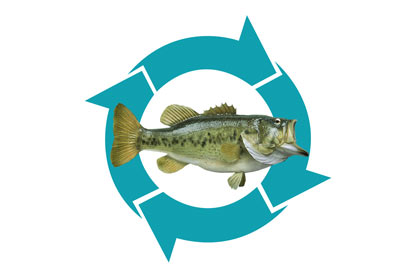
Catch & Release
Conservation-minded anglers like to say, “A fish is too valuable to catch only once!”
This is the driving thought behind the concept of catch-and-release fishing. You can enjoy the challenge of hooking and landing the fish, and even get a photo or video for “bragging rights,” but then let it go to possibly be caught again another day.
Of course, the conservation principle of catch and release is compromised if the fish doesn’t survive after release, and not every catch-and-release story has a happy ending… for the fish, that is.
Let’s say you catch an undersize seatrout and it’s injured in some way during the fight. By law, you can’t keep that fish; you have to throw it back, even though you know it’s not going to survive after you release it.
Anglers can greatly increase the odds of fish survival by following some basic methods, as recommended oncatchandrelease.org.
Use circle hooks.
Designed with the point turned perpendicular to the shank so it creates a circular shape, a circle hook typically ensures that fish usually get hooked in the mouth, not the gut or throat. This makes it easier to remove the hook without harming the fish.
Don’t set the hook by jerking the rod.
Be patient and let the fish take the bait. The hook will set itself if you reel in the slack slowly and steadily, which makes this style hook helpful for novice anglers.
Land the fish as quickly as possible.
You don’t want to exhaust the fish, as that will decrease its survival odds after release.
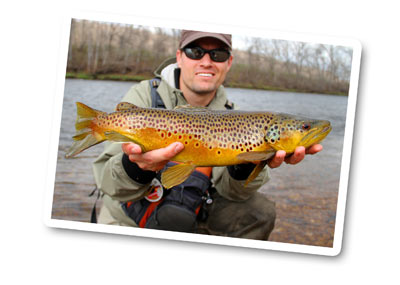
Handle carefully.
If you have to handle the fish, use wet hands—not a towel—so you don’t remove the slime coating on the fish, which serves as protection. Don’t touch the fish’s gills. If you bring the fish from the water to photograph it, never lift it by its jaws, which can seriously injure it; instead, support its weight horizontally. Never use a gaff unless you are keeping the fish and know it is legal size.
Use a dehooking device if you can see the hook.
A dehooker allows you to safely remove the hook with minimal damage and without the hook “re-engaging” in the fish. It also means you don’t have to handle the fish, which can damage it. If you can’t see the hook, cut the leader as close to the hook as possible without bringing the fish out of the water.
Release carefully.
Let the fish go head first. If it appears exhausted, take a moment to hold the fish so its head is pointed downward underwater. Move it back and forth so water moves over the gills and it is able to swim without assistance.
Fishing For A Living
Some anglers are good enough to make a living at it. Just ask Billy Bowen, Jr., of Ocala, who’s been tournament fishing since the mid-80s.
Bowen, 55, fished professionally from 2000 to 2004 and has competed in 138 tournaments since 1995, winning six of those and finishing in the Top 10 27 times.
“When I was competing fulltime, I was usually gone three weeks out of the month. It was something I dreamed of and won’t ever regret, but once it wasn’t fun, I decided to stay home and fish around here,” says Bowen.
“You can win big money, sometimes $50,000 to $100,000 at one tournament, but when you get to that level, you’re also spending a lot of money. You can pick up sponsors—and I had some good ones—but you’re also spending a lot of your own money and it’s not cheap to compete,” says Bowen who’s won a fully rigged Ranger bass boat and a brand-new Chevrolet pickup truck, along with cash earnings, and of course, plenty of trophies.
It takes years of experience to get to the level where you’re fishing for these prizes, and the competition is stiff. Some tournaments are invitation only and there may be as many as 250 boats entered.
Although Bowen no longer travels around the country to tournaments, he still loves to compete in Florida, fishing the Extreme Bass Series, usually with his son, Andrew Bowen, or his friend, David Hunter. They often fish the St. Johns River, Lake Rousseau, Harris chain and the Kissimmee chain near St. Cloud.
There are two anglers per boat, and winners are determined by weighing the best five fish caught by each team. Highest weight wins. Conservationists will appreciate that the fish are released at the end of the competition.
“If you weigh in a dead fish, that’s an 8-ounce penalty, which can cost you a lot of money,” says Bowen. “We take good care of our fish, and they all get let go in the end.”
Fish Tales
On June 23, 2007, I was taking my employer and his son fishing for the day out in the Gulf. At the time my daughter, Melissa, was pregnant and due with our first granddaughter. My wife said I was crazy to go because I might miss it. We got out there about daylight, and sure enough, about noon I get a call saying Melissa’s water broke. But the fish were biting real good; we were catching redfish and trout, so I told the guys we didn’t have to hurry, we could fish for a while. We finally went in about 4:00. I still had time to get the boat cleaned up and made it to the hospital where my granddaughter, Riley, was born about 8:00. I’d never have heard the end of it if I’d missed her being born!”
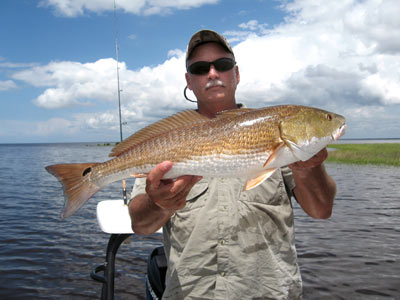
Mike Vachon, 54, Ocala, who’s been fishing since the early 1970s. He enjoys saltwater fishing for redfish, trout, grouper and goes year-round. He can also be found diving, spearfishing and scalloping.
I was fishing with A.J. Nuckles, and we had a redfish that had been in the cooler for about an hour. I told him to revive it. I was just joking, but he put it in the water and it actually did revive. We’d caught a bigger one, so we ended up letting it go and it took off; they’re pretty tough fish!”
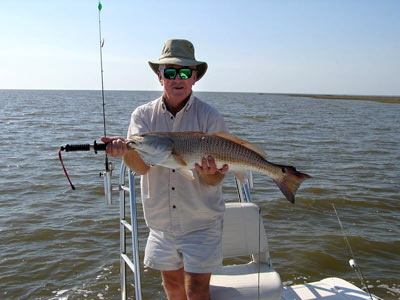
Joe Norris, 63, of Sparr, who can be found fishing in the Gulf, going for redfish and seatrout. He uses artificial lures, cut mullet and shrimp, but says, “The best redfish bait in the Gulf is cut, fresh ladyfish. It’s not good for humans to eat, but redfish love it!”
The first time I hooked a tarpon was over in Waccasassa Bay in 2007. I was by myself in my flats boat, fishing for trout on the grass flats, and I hooked a 100-pound tarpon on my trout rod. I fought that fish for over a half hour. It spooled me (took all the line off the spool) several times; I had to chase it with the boat trying to reel and drive the boat at the same time. Then I see a Florida Fish & Game boat headed my way. I was trying to wave them off so they could see I was fighting a fish. They stopped and watched me for a while, then finally left. I continued to fight the fish until I thought it was worn out enough to get it close enough to get a photo before I let it go, but it made several good jumps—just like you see on TV—and broke my line. I never got the photo, and that’s the only tarpon I’ve ever hooked.”
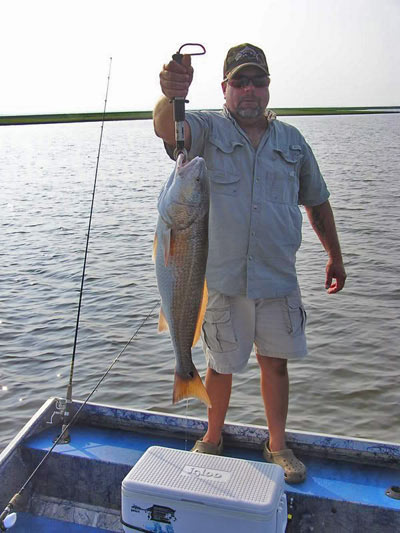
A.J. Nuckles, 55, Ocala, who has been fishing since age 5 and has owned just about every type of fishing boat, from airboats to bass boats and now uses a flats skiff.
In summer time, you can expect it to be tough fishing. My son, Andrew, and I did a tournament on Rodman Reservoir. We pulled up early that morning about 6:30 at the spot where we’d caught fish when practicing. We each caught two small fish, about 14 to 15 inches long. We tried other areas, but had no luck. By about 12 o’clock, we still only had those four fish in our live well, but we weren’t giving up and stayed focused. You never know when you’re going to catch a big fish. Then I got a seven-pounder, so that gave us five fish, and by about 12:30, I caught an eight-pounder, so now we had six fish, so we let the smallest one go. We never had another bite after that, but we felt like we had enough to win because we were right at 20 pounds (total weight of all five fish). We ended up winning first place in both weight and the biggest fish of the tournament.”
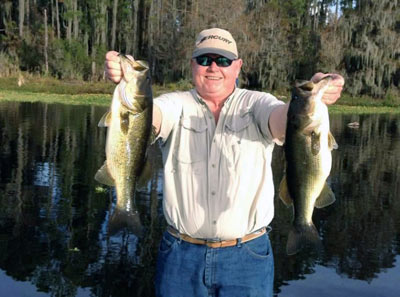
Billy Bowen, Jr., 55, of Ocala, who’s competed in tournament fishing since the mid-80s and has even designed his own artificial lure, the “Jigzilla,” which has caught many fish over the years.






